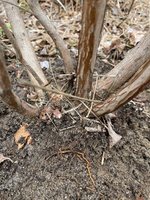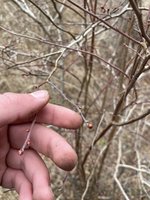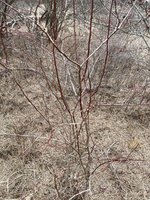- Hazel Alder - not commonly used, but could work well enough for bonsai. Leaves are a touch large
- Silver Bell. - Styrax americana- the native Styrax species or if you can find the related silverbell Halesia caroliniana - both species are uncommon in the wild. Both can make good bonsai, their horticulture is somewhat tricky, not really "beginner plants" but no reason not to try if you can find either one.
- Sweet Birch - due to large leaves that do not reduce well, and coarse branching, not often used for bonsai. Lovely bark, make it worth the effort if you are a fan.
- Flowering Dogwood - Cornus florida - makes an exquisite deciduous "literati" style, or a sparse, airy, graceful, slender trunk tree. Bill Valavanis has done several lovely examples over the years.
- Black Spruce - Picea mariana - a "creature" of the pine barrens. Excellent for bonsai.
- American Holly. - Ilex opaca - excellent for bonsai - all Ilex species are good, some are deciduous, some are evergreen. Try to collect both male and female specimens, so you can get berries. Their winter image with the red berries is why people seek them out.
- Red Oak - all oaks make good bonsai, but oaks are slow to develop. Myself I promote the idea of attempting bur oak, Quercus macrocarpa, its leaves start out huge, but it has the most coarse, rough bark of any of the North American native oaks. Because they are slow to trunk up in container culture, they are not recommended as beginner trees, but no reason to not attempt.
- Pitch Pine - an ideal native pine for bonsai, it should be treated as a double flush pine, treat it similar to Japanese Black pine.
- Eastern white pine - Pinus strobus - a wretched pine for bonsai. You will struggle with it for a decade or two, and after decades of work you will deem it worthy of the compost heap. I'm being harsh, but Eastern white pine, pinus strobus has issues that are difficult to manage. Any other species of pine will perform better than P. strobus for bonsai. There are one or two "good examples as bonsai" but they are the exception. Most people give up in frustration with EWP.
- Many more - Look for Pinus virginiana, it is a decent pine for bonsai also.
Your best pine to use is Pitch pine, Pinus rigida.
An introduced invasive species is the scots pine - Pinus sylvestris. - it makes excellent bonsai, and if you find it in the wild, you will be removing an invasive species.
Another invasive species that makes good bonsai are any of the Elaeagnus species. Autumn olive, silverberry, and goumi berry. Actually there are 4 species, all introduced, at least 2 are invasive species in NJ and will make decent bonsai, fragrant small white flowers, and "somewhat edible" fruit.



